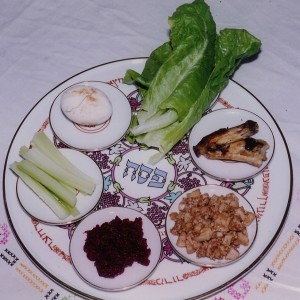Dos and Don’ts for Running an Explanatory Seder
By Gideon Black
Do
• Make sure everyone at the table feels like a player on the field and not a spectator watching the action.
• Have all participants use the same Haggadah. A user-friendly Haggadah with clear, large-type Hebrew and English fonts, which includes a few colorful illustrations, is a better choice than one with extensive commentary.
• Make sure that everyone in the room gets a chance to have his voice heard at least once during the evening. Provide opportunities for participants to answer questions (see page 50 for Seder questions), offer a devar Torah or share a memory of Seder experiences they have had in the past (on campus, this gives unaffiliated students an opportunity to recall things they learned from their grandparents who often led the Sedarim they attended as children).
• Have family heirlooms at your Seder. Children will grow up cherishing the memories of using zeide’s Kiddush cup and will want to use it at their own Sedarim one day.
• If you don’t have family heirlooms, start making them! Don’t get a new Seder plate or afikoman cover every year—just because the item is not eighty-five years old or from Warsaw doesn’t mean it can’t create its own legacy. Familiarity with ritual items breeds a close relationship with those objects and offers security and meaning in a world where everything is replaceable and impermanent.
• Use props. Place a few toy frogs around the room and have a costume on hand so someone can dress up as an Egyptian taskmaster—get the kids asking questions!
• Act out parts of the Haggadah. Whether it’s the section on the Four Sons, the Sages in Bnei Brak or any other episode in the Haggadah, asking people to act it out (preferably give them advance notice) is a great educational method that often leads to laughter.
• Sing! The concluding songs of the Haggadah should have the whole family out of their seats, and there should be actions accompanying the words. Everyone has been sitting patiently for a long time at this point, so it’s a great opportunity to end on a high. Make sure to choose tunes that everyone knows, or teach everyone your favorite one.
Don’t
• Wait until Seder night to figure out how you are going to make it meaningful and participatory. Preparation is essential.
• Have the Haggadah read entirely by the father of the house or the Seder leader. Go around the table and ask each participant to read a paragraph, whether in Hebrew or English. People will feel less like they are in class and more like it is a shared experience. Also, knowing you are going to be called on soon forces you to make sure you have the place.
• Don’t let the meal drag on. The end of the Haggadah is the best part and you don’t want to lose your audience.
• Be inflexible. Adapt to the facts on the ground. If it’s very late and half of the table is falling asleep, if you insist on reading every word, the Seder may become a negative experience. Use your discretion to skip some of the lengthy texts if necessary.

